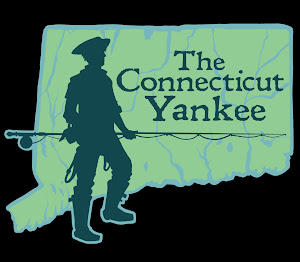Taking a six month seasonal job with the DEP's Inland Fisheries Division helped me put off the so-called real world after graduating college. By far the coolest part of the job was sampling bodies of water across Connecticut via electrofishing. For anyone unfamiliar with the process, electrical currents are sent through water that temporarily stun fish, allowing for easy capture and transport into holding pens. Then fishery biologists can count and measure the fish, take scale samples, and even bring back the cream of the crop to the hatchery for breeding. Electrofishing big rivers, small streams, and even lakes and ponds was an eye-opening experience to me, especially from an angler's point of view. The amount of fish we got to see up close and handle was obscene. My favorite waterway that we sampled that summer was one that I fish very often, the West Branch Farmington River.
For years before and since that job, I've tagged along during this survey. I like keeping tabs on the trout situation in the Farmington and it brings me back to those fun times as a seasonal staffer. I continued the tradition this September and documented the first of the two-day event with a camera. On a beautiful Tuesday far from my office desk, I spent a few hours with old colleagues admiring trout and their fine habitat. Though cool from the bottom release dam upstream, the river's had been extremely low for a long time. Normally the flow from the dam is cut back the day before shocking, but this year that was unnecessary because it was the river was so low already. This gave trout ample time to find deep holes that are difficult to sample, which can ultimately affect the integrity of the survey.
 |
| A Wood turtle, a species of "Special Concern" in Connecticut |
Bright and early that sunny morning, a large crew amassed at the lower boundary of a designated Trout Management Area. A human chain stretched across the river and moved upstream at a snail's pace, stunning and netting everything in their path. All fish were transferred to holding pens until enough were captured to make stopping worthwhile. As the shocking crew continued on, a few fisheries biologists and staffers stayed behind to record the captured fish before catching back up with the group. Recording the fish consists of measuring, identifying, and sometimes taking scale samples. To the best of their ability, biologists determine whether the fish are born in the river or raised in a hatchery. If it's a stocked fish, it can sometimes be determined at what age and sized they were released. This is possible thanks certain fin clips, as well as elastomer tags, which are injected dye marks that are placed above the eye of Survivor strain brown trout.
With the recent drought conditions, it will be interesting to see this year's data stacked against previous samples when it becomes available. While I didn't witness any crazy big, wild trout this time around, I did get to get to see plenty of healthy wild specimens in the 18-inch class and an excellent amount of small wild browns too. On the negative side, I noticed a large amount of skinny trout, especially Survivors from the 2009 and 2008 class. It seems the younger Survivors stocked last spring may be out-competing them for food. But overall it is always impressive witnessing the sheer number of trout captured over such a short stretch of river; way more than any angler would like to believe during a hard day of fishing.






















.jpg)




























Fine work by all involved. Thanks.
ReplyDeleteMan we do need rain.